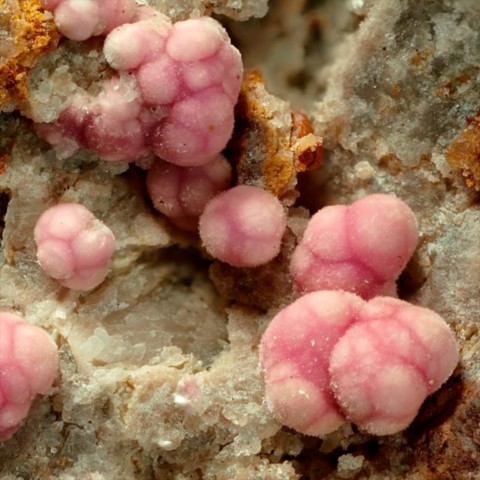DAWSONITE
Class : Carbonates, nitrates, borates
Subclass : Anhydrous carbonates
Crystal system : Orthorhombic
Chemistry : NaAlCO3(OH)2
Rarity : Uncommon
Dawsonite is a rare sodium aluminum carbonate. It is a secondary hydrothermal mineral that forms at low temperatures by decomposition of aluminum silicates. It was named in honor of the Canadian geologist Sir John William Dawson. Dawsonite forms small lamellar to acicular crystals, colorless or white, exceptionally pink grouped in aesthetic spherolites, tufts, or fine radiated encrustations. The size of the spherolites does not exceed 1 mm.
Main photo : Dawsonite from Francon quarry, Montreal, Canada © Stephan Wolfsried
Dawsonite in the World
Twinning
No twin known for this mineral species.
Fakes and treatments
No fakes listed for this mineral species.
Hardness : 3
Density : 2.43
Fracture : Undetermined
Streak : White
TP : Transparent
RI : 1.466 to 1.596
Birefringence : 0.130
Optical character : Biaxial -
Pleochroism : None
Fluorescence : White
Solubility : Acids
Magnetism : None
Radioactivity : None





